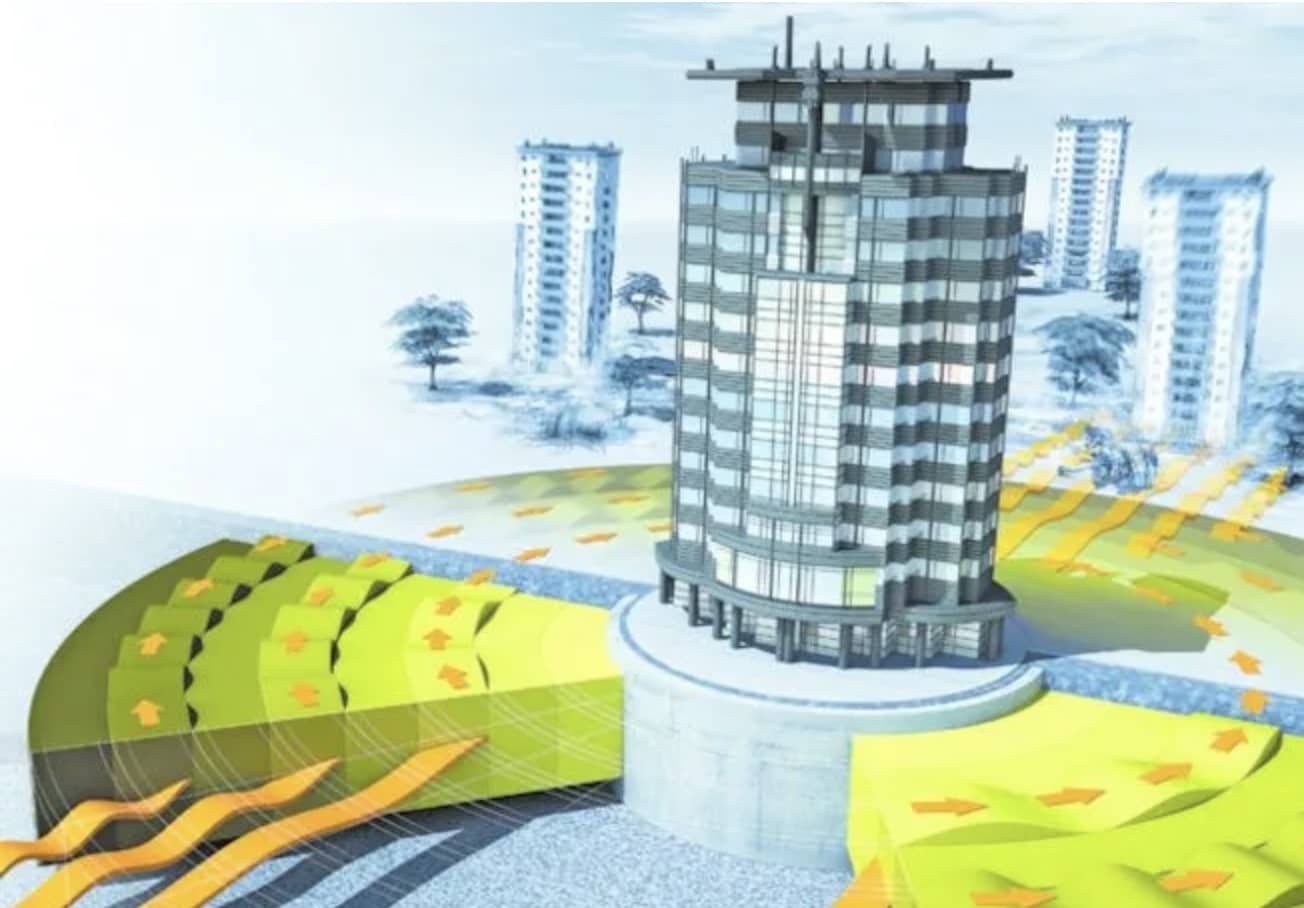Invisibility Cloaks are not impossible, in theory. If we can bend electromagnetic waves around an object, you won't be able to see or hear it. While it is far from being implemented, Seismic Invisibility Cloaks are already being tested.
An earthquake, or any kind of vibration in the ground, for that matter, creates a lot of kinetic energy. This energy can be treated just like above, by placing obstructions or deflective material in the path of the wave.
Most seismic waves change characteristics when traveling through the earth's crust. When passing through hard rocks, they travel very fast but with relatively low strength.

When they reach a soft soil level, though, they slow down, increasing in strength however. The shape of ground also affects the direction of the wave's path. If a wave hits an underground cavity, it shies away from the sudden emptiness where there is nothing to carry the kinetic force further.
This guarantees that different substances affect the seismic waves differently. Also does the shape of the ground. Therefore, it is possible to construct ring-shaped "kinetic deflectors" around a very valuable building or complex (like a nuclear power station) to make sure the seismic waves go around it, not through it. In effect, earthquakes can't see the building.
The study of the above technique is called Transformation Seismology. It depends upon two central factors: soil density and elastic modulus.
However, it is easier said than done. In order to achieve perfect seismic invisibility, both the soil density around the structure and the elastic modulus of the ground has to be controlled perfectly and at the same time. More difficult is to counter waves coming from any direction, since elastic modulus depends upon direction.
Digging deep moats around the structure and leaving them empty can be a great way to redirect the seismic waves passing through the area. As described above, seismic waves don't love empty spaces - they bend away from these. So, if a structure is not close to the epicenter and seismic waves don't hit it from the bottom but from the sides instead, this strategy will redirect them towards the ground, saving the structure.
There is a problem with this approach. The deflected waves, instead of going downwards, may get bounced off towards another direction on the surface. This works fine if your installation is in the middle of nowhere. But what if there are other buildings nearby? They might get hit with double the forces of the quake.
On the other hand, if we fill the moat with plastic substances, it will not redirect the waves much. But it will serve as a motion dampener which will absorb much of the kinetic force in the earthquake or other vibration. Much like a rubber band or gasket, it will effectively soften the blow. Use multiple moats like these, and they kill the whole quake before it reaches the center of these circles, where the valuable structure stands.
It is seen that dense jungles with old, large trees dampen the effects of earthquakes quite well. Another way mother nature saves us! The deep and widespread root network underground separates the soil and effectively acts like a net that "catches" the seismic ground waves in it. Some parts of the wave deeper than the root network also shy away from this odd kind of soil (with a lot of plastic channels in it) and turn downwards.
Therefore, planting dense trees that grow huge roots are significantly useful in blocking earthquakes before they reach a valuable building. It is especially effective when you know which way the seismic waves generally come from. You can put a wide patch of forestry, or five, to use them as shock absorbers and deflectors.
To conclude, not one technology is perfectly capable of making a building impervious to earthquakes. Not yet, anyways. Using a seismic invisibility cloak will be great in work in combination with anti-seismic measures, like tuned mass dampers, moving walls or base isolators. Some of the modern, sensitive structures already are using various combinations of these systems.